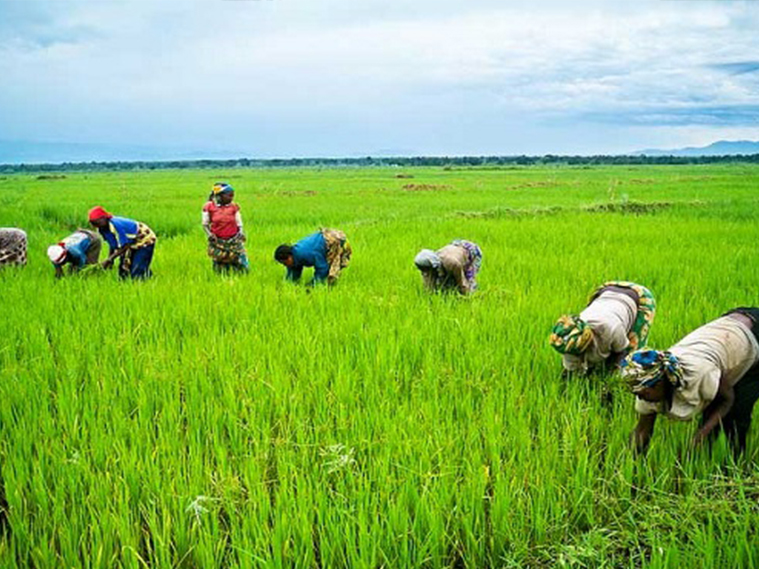By Francis Nang’ayo and Jane Achando.
Sub-Saharan Africa (SSA) region accounts for more than 13 per cent of the global population (or 1.2 billion people), a figure that is projected to grow to 2.1 billion people by 2050. This will have direct implications on demand for food from agriculture, a sector that supports the livelihoods of over 70 per cent of the population.
However, Africa’s agricultural sector today faces daunting natural and structural challenges that beg for urgent and sustainable interventions. Despite the myriad challenges faced by the continent, African countries are rolling out strategies to ensure food security. One such strategy is the introduction of new and improved plant varieties.
Most of these improved varieties offer several benefits such as improved yield, more efficient use of nutrients, resistance to plant pests and diseases, water efficiency, salt & drought tolerance and better adaptation to climatic stress amidst increasing population growth and climate change.
Given the numerous benefits, these varieties are an important and sustainable means of achieving food security. However, developing agricultural innovations like new crop varieties through breeding is a long process that demands for concerted capital investment. Hence, sustained investment in agricultural innovations only becomes worthwhile where mechanisms exist to reward investment made.
Globally, the International Union for the Protection of New Varieties of Plants (UPOV) system provides an effective incentive for plant breeding and results in the development of new, improved varieties of benefit for farmers, growers and consumers.
Most African countries and signatories to UPOV. For instance, Kenya is a Member of UPOV having acceded to UPOV 91 in May 2016 and has since experienced a significant increase in the number of local breeders. Traditionally, most of the breeding in Kenya was the preserve of the National Agriculture Research System but since the implementation of the Plant Variety Protection (PVP) system in the country, there has been increased breeding from local companies, Universities and other Scientists.
Nationally, several African countries have been developing legislation for plant variety protection. In Kenya, new plant varieties are regulated by the Seeds and Plant Varieties Act which grants Plant Breeders Rights (PBR) for the person who bred the new plant variety. For a breeder to be granted PBR, the variety must be new, distinct, uniform, stable and meet other administrative requirements under the Act.
Developing agricultural innovations like new crop varieties through breeding is a long process and understandably it is critical to offer incentives to these breeders. Some key benefits of PBR include the use of protected varieties as a source to breed new and more superior varieties, adopting the wide use of high yielding varieties and job creation in the agriculture sector. Other African countries that have recently passed Legislation on plant variety protection include Malawi that enacted to the Plant Variety Protection Act in 2019, and Uganda that passed its’ Plant Variety Protection Act in 2014.
To ensure that these new and improved varieties reach the African consumer, these varieties need to be commercialized. The commercialization of innovative varieties such as GM crops is however in some cases delayed due to restrictive and or prohibitive Legislation. Africa is a vast continent with countries that have diverse political persuasions, trade considerations and environmental interests.
As such, the continent is characterized by a mosaic of national policy positions on GM technology, ranging from those that can be considered to be facilitative to those that are more pre-cautionary and even those that are prohibitive to the adoption of agricultural innovations like new varieties that are transgenic in nature, commonly referred to as GMO crops.
It is important to stress that for commercialization of innovative agricultural technologies to take root across African countries, regional harmonization policies and regulations has to go hand in hand with commercialization endeavors.
Over the years, AATF in collaboration with Regional Economic Communities (COMESA, EAC & ECOWAS) has actively supported implementation of regulatory reforms to hasten crop variety release and registration and promote regional harmonization for technology delivery across similar agro-ecological zones. The resultant streamlining of policies and procedures means that varieties/breeds released in one country can be utilized in other countries of the same agro-ecological zone.
Significantly, this effort through working withpartners has resulted in updating of crop variety catalogues and printing of seed labels to facilitate regional seed trade in COMESA member states, updating Quarantine Pest Lists to support cross border trade in ECOWAS region and the adoption by the EAC Council of Ministers in November 2019 of Regionally Harmonized Guidelines for Registration of Pesticides in the East Africa Community.
Clearly, the aspirations of transforming Africa’s agriculture into a business-oriented and commercially viable sector that guarantees the continent’s food self-sufficiency and puts an end to food insecurity and malnutrition will ride on a twin approach of facilitating commercialization and delivery of productivity enhancing technologies to farmers at scale while also seeking to create an enabling environment of policies and regulations for technology adoption and functioning of input and output markets.
Nang’ayo is the Regulatory Manager while Jane is the legal officer at AATF



















































































